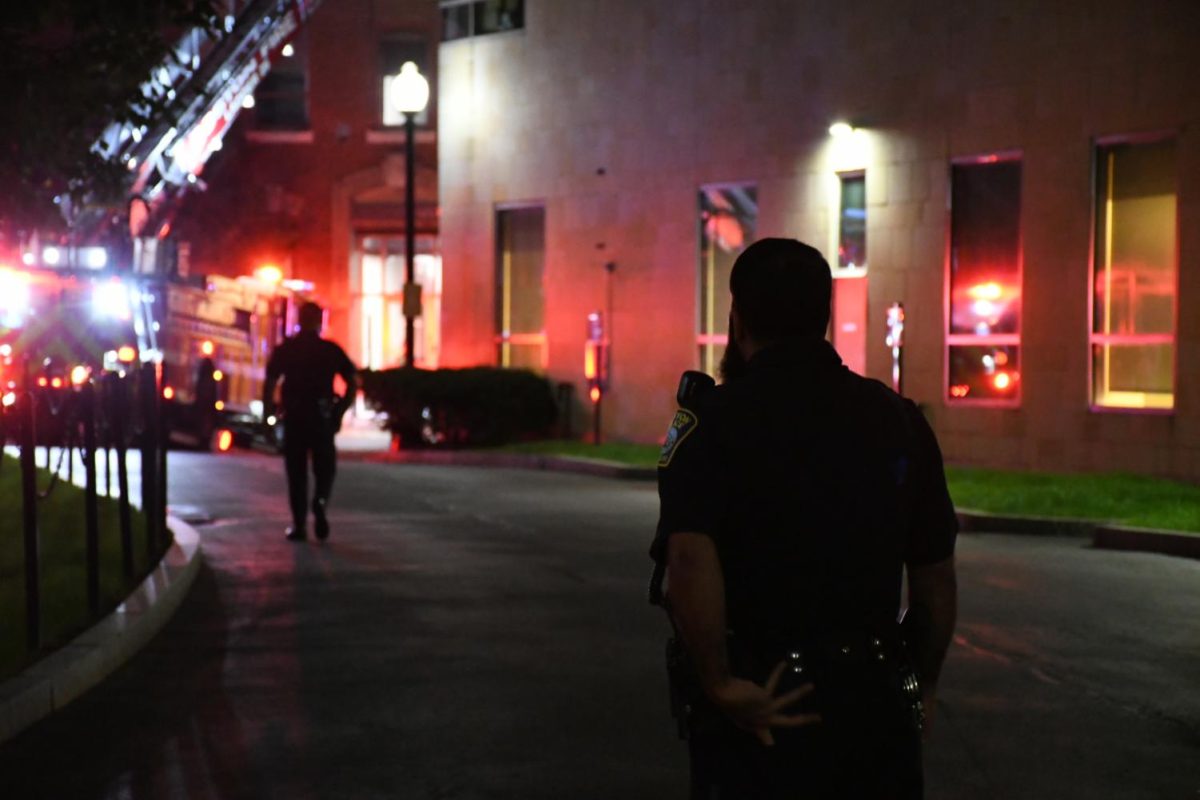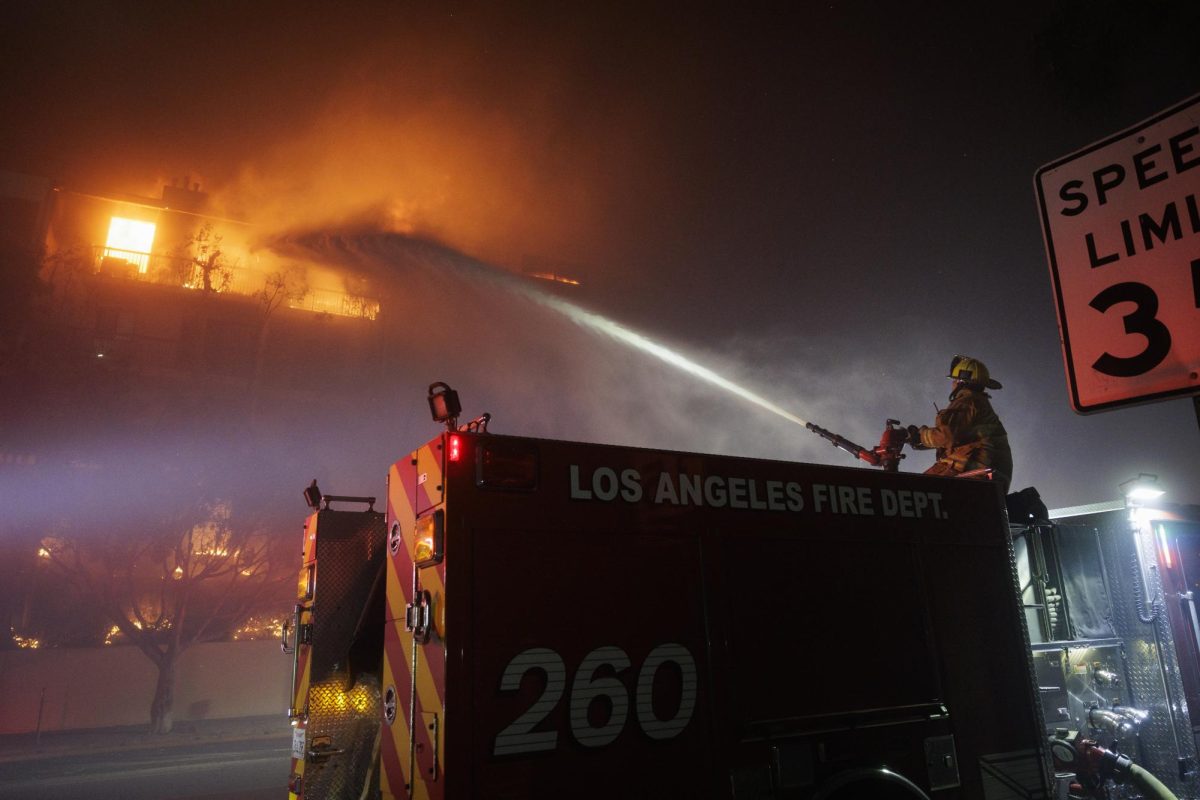
News Staff Photo/Matt Greene
By Madelyn Stone, News Staff
Taking on two feet of snow requires more than shovels and plows – it calls for a strategy. To keep up with snowfall rates of two to three inches per hour in temperatures well below freezing, those working to clear the drifts need a calculated battle plan.
Northeastern building services met last weekend’s blizzard with just that sort of strategy, wielding a variety of mechanical forces to match the flakes. From their own garages and from a few contracted companies, university facilities brought out an arsenal of vehicles and devices in an effort to keep campus running as normally as possible.
And despite the best efforts of the so-named Nemo, the Northeastern snow removal team was able to successfully maintain such normalcy.
Jack Malone, who directs the physical plant services branch of Northeastern facilities, said the snow clearing process went about as smoothly as he could have hoped.
“The snow team really did a great job,” Malone said. “It was a very difficult storm to work. The intensity of the snow, the temperature, the wind and the amount of snow were all really dangerous during the beginning and especially during the height, through to the end of the storm. We really had to prepare very carefully for how we were going to kind of battle the storm, but the plan worked.”
The preparations for snow begin long before the storm even appears on the weather forecasters’ radar.
The director of Northeastern’s building services, Mark Boulter, noted the university has outside contracts prepared with equipment companies for use of the heavier types of machinery, and contracts with weather services to stay up-to-date on the most accurate forecast data.
“There’s a lot of planning, there’s a lot of training that takes place,” Boulter said. “It’s something we take very seriously here.”
The snow removal team’s agenda has the main focus of maintaining a safe environment for students, faculty and staff to go about their business on campus. Boulter pointed out that this includes clearing city streets and city sidewalks that Northeastern community members frequent. Even when the campus is officially closed, as it was when about a foot of snow fell last weekend, the facilities crew works to maintain accessibility for those still living or working on campus.
When a storm like Nemo hits, the simple goal of keeping pathways clear requires a strategic plan. Malone emphasized there’s more at play than lifting and dumping.
“It was one of the top five storms in snow accumulation and when we have this much snow, you just can’t take a pick-up truck and put a plow on it and plow. The snow’s too heavy. So you really have to manage. We really used every trick in the book to battle the storm,” Malone said.
Malone also commended the governor’s decision to shut down transportation in the Commonwealth, and the timeliness of Northeastern’s announcement to cancel classes Friday.
“That really allowed for the people with the plow trucks and the front-end loaders and bobcats to get out and do their job and not have to worry about cars being stuck or people being stranded and that really made such a big difference,” he said. “Everybody dedicated themselves to making sure the campus was safe and no one worried about anything else. That really changed things from a management point of view. We got to just manage the snowstorm and not worry about everything else.”
With classes canceled, driving banned and the MBTA shut down, there were few excuses for people to venture out during the worst of the storm, which allowed service staff to take full advantage of their snowstorm arsenals. Bobcats, plows, sidewalk bombardiers, pickup trucks, front-end loaders, snow blowers, sanders and melters – all paraded through campus at some point last weekend.
“All of our equipment we used in different ways,” Malone explained. “Because there was nobody to worry about we had bobcats with snow-throwers on them and you didn’t have to worry about anybody being – for the most part – hit with the snow.”
The accuracy of the forecast also made things easier from a management perspective.
“The weather forecasters were right on when they predicted what type of snow it would be,” Malone said. “It was a very wet, pasty, heavy snow in the beginning and then it was a light, fluffier snow. It was really slippery underneath, and for that you need different machinery.”
The vertical removal, however, is just one piece of the process. Facilities staff members also have to make decisions about which direction to move the snow, and when to plow which sidewalks. Chemical tools such as salt were at play too, though Boulter said the less wasteful mechanical removal options are the methods of choice.
“We made a lot of little decisions about when we put the salt down, the sand down, and when we melted the snow, and what paths we’d keep open first and what paths we’d keep open second,” Malone explained.
Despite the plethora of vehicles, machines and chemicals Facilities had at their disposal, there are some tasks that remain best suited to the humble shovel.
“There’s a lot of shoveling that takes place,” Boulter said. “We only use so much equipment, but just think of all the doorways and the stairs and the handicap ramps and everything else. We have over a hundred and something buildings on campus that have to be cleared, and stairs and entryways and fire egress doors. There’s a lot of manpower.”
In addition to around 45 full-time staff members and the help contracted to operate the heavy machinery, 35 part-time students working for facilities helped clear the snow. Boulter and Malone each extolled the dedication of the staff and the cooperation of students on campus, which allowed the crews to focus on safety and even appreciate the storm’s unexpected effects.
“It really was kind of fun,” Malone said. “I’ve never seen so many snow people on campus, so many snowmen, snowwomen, whatever else, just sitting there. People had some fun, people enjoyed it.”








